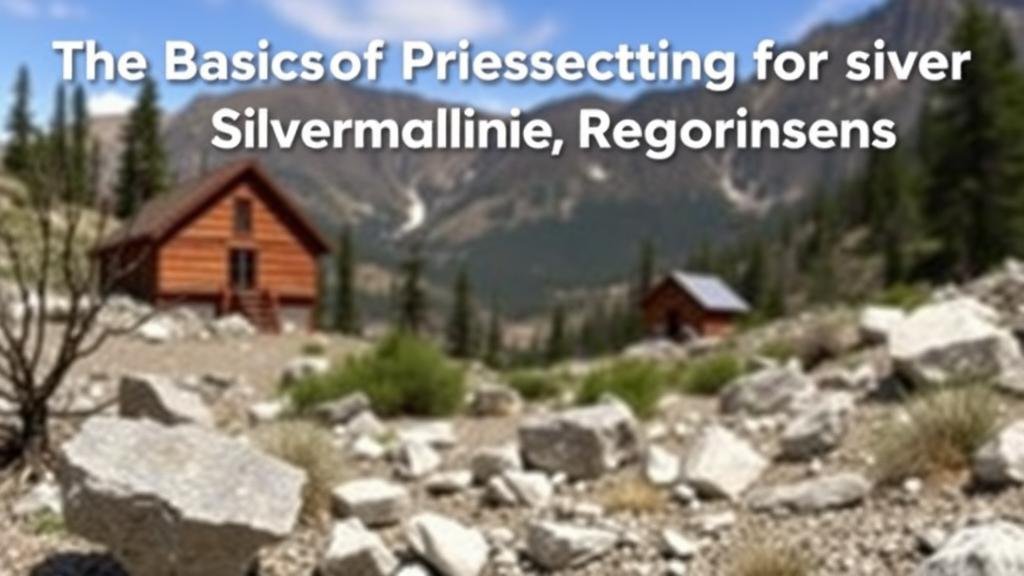The Basics of Prospecting for Silver in Historic Mining Regions
The Basics of Prospecting for Silver in Historic Mining Regions
Silver has been a valuable metal since ancient times, used for currency, jewelry, and industrial applications. Prospecting for silver in historic mining regions combines historical knowledge with modern techniques, allowing miners and hobbyists alike to locate silver deposits effectively. This article will explore the fundamental concepts of silver prospecting, including the history, techniques, and tools utilized in the field.
Understanding Historic Mining Regions
Historic mining regions are areas rich in mineral deposits that have been actively mined in the past. Understanding the geological and historical context of these regions is crucial for successful prospecting. Many of these areas were extensively mined during the 19th and early 20th centuries, but advances in mining technology often left additional silver reserves untapped.
For example, the Comstock Lode in Nevada, which produced over $400 million worth of silver in the 1860s, is still a significant area of interest today. Modern prospectors can utilize the remnants of past mining operations to guide their search for new silver deposits.
Geology and Mineralization
Silver is typically found in sulfide ores, often in association with other metals like lead and zinc. Understanding the geological formations that host these precious metals is essential for effective prospecting. Key features to look for include:
- Veins and Lodes: Silver often occurs in veins, which are fissures filled with mineral deposits. Lodes refer to more extensive deposits that can be mined.
- Fault Lines: These geological features can serve as conduits for mineral-rich fluids, increasing the chance of finding silver deposits.
- Old Mine Dumps: Tailings from historical mining operations may still contain significant amounts of silver, making these areas valuable for prospectors.
Prospecting Techniques
Modern prospecting techniques are a blend of traditional practices and new technologies. Here are some common methods:
- Panning: A classic technique that involves washing soil or sediment through a pan to separate heavier minerals, including silver.
- Metal Detecting: Using electronic metal detectors to find buried silver coins and jewelry, especially in areas like ghost towns.
- Geochemical Sampling: Collecting soil or rock samples to analyze for the presence of silver and other metals.
- Geophysical Methods: Utilizing techniques such as resistivity surveys and magnetic surveys to detect subsurface mineralization.
Tools and Equipment
Investing in the right tools enhances the prospecting experience. Common tools include:
- Pans and Screens: Essential for panning and sifting through sediment to isolate silver particles.
- Metal Detectors: Effective for locating buried silver artifacts and nuggets.
- Rock Hammers: Used to break apart rock samples for visual inspection and further analysis.
- GPS Devices: Helpful for mapping and navigating historic mining sites effectively.
Legal Considerations
Prospecting in historic mining regions requires an understanding of legal regulations, as many areas have specific rules regarding mineral rights and land use. Key considerations include:
- Mining Claims: Before prospecting, check whether the land is under a mining claim, as unauthorized excavating can lead to legal issues.
- Permits: Certain activities may require permits, especially in protected areas. Always verify local laws.
- Environmental Regulations: Be mindful of the environmental impact of prospecting and adhere to regulations aimed at preserving natural habitats.
Real-World Application: Case Study of the Tonopah Mining District
The Tonopah Mining District in Nevada serves as an exemplary model for modern silver prospecting. Active from 1900 to around 1940, Tonopah produced significant quantities of silver alongside gold. Today, the region attracts prospectors equipped with modern technology, alongside historical knowledge.
For example, hobbyist prospectors using metal detectors have reported finding silver coins and bullion buried near old hotel sites, remnants of the buzzing mining town. area also still holds potential for discovering untouched veins, aided by geochemical sampling methods that have revealed promising results.
Actionable Takeaways
- Research historic mining regions to identify areas with a rich history of silver production.
- Use modern prospecting methods tailored to the specific geology of the area.
- Invest in essential tools and equipment to enhance your prospecting experience.
- Stay informed about legal and regulatory considerations to ensure a responsible and successful prospecting endeavor.
To wrap up, prospecting for silver in historic mining regions combines historical appreciation with scientific methodologies. By understanding the geological context, utilizing modern techniques, and adhering to legal requirements, prospectors can increase their chances of finding valuable silver deposits, whether for personal use or commercial application.



